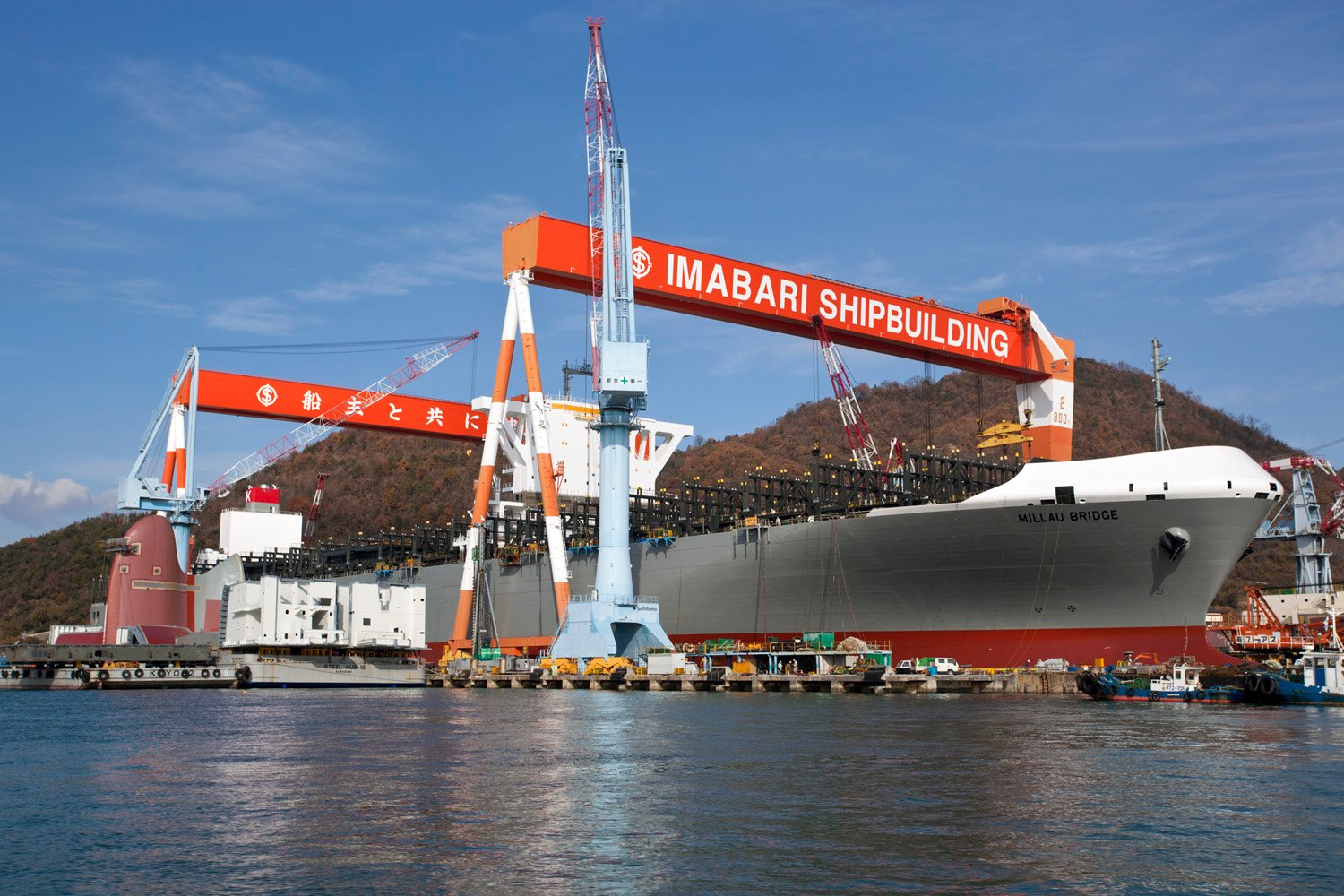Japan is following South Korea’s lead by proposing a large-scale investment plan to expand and modernize its shipbuilding industry as part of efforts to secure a favorable trade agreement with the United States. According to the latest report from Nikkei Asia, Japan’s shipbuilding sector is seeking government financial backing to achieve its goal of doubling domestic shipbuilding capacity by 2035, while also aiming to re-enter the LNG carrier market.

In recent years, Japan’s position in the global shipbuilding industry has slipped to third place, far behind China and South Korea. Affected by price competition, its market share has shrunk dramatically from a high of about 20% to an estimated 7-8% today, less than half its former size. Nikkei Asia reports that to reverse this decline, the Japanese government is calling for doubling shipbuilding capacity and increasing investment in technology.
According to reports, Imabari Shipbuilding President Yukito Higaki, who is also head of the Shipbuilders’ Association of Japan, submitted a plan to Japan’s ruling Liberal Democratic Party on October 23 outlining how Japan’s shipbuilding industry can achieve government-set targets. The plan is said to include the procurement of new equipment such as cranes.
Nikkei Asia also reported that members of the Shipbuilders’ Association of Japan, including Kawasaki Heavy Industries and Mitsubishi Heavy Industries, have informed the government that the massive investment required to achieve the production capacity doubling target exceeds the companies’ own financial capacity. Participating firms plan to raise approximately $2.3 billion in start-up capital through loan financing and are seeking financial assistance from the government.
Reports indicate that the Japanese government has proposed establishing a fund of nearly $6.6 billion to support investments in shipbuilding capabilities. The Japanese government has previously funded multiple initiatives supporting the development of next-generation shipping, including early testing of ammonia, hydrogen, and liquefied carbon dioxide transport, as well as ship automation technologies.
Additionally, Japan is facing challenges such as an aging seafarer population and a shortage of new entrants to the industry.
Just as Japan seeks government support to catch up with industry leaders, its direct competitor—South Korea’s shipbuilding industry—is launching a massive wave of capacity investment.
South Korean media reports indicate that major South Korean shipbuilders will continue advancing their investment plans with the goal of enhancing shipbuilding efficiency. HD Hyundai plans to invest 987.9 billion won (approximately $686 million) in equipment in phases. HD Hyundai Heavy Industries plans to invest 181.1 billion won (approximately $126 million) in the second half of this year. HD Hyundai Mipo Dockyard intends to invest 433.2 billion won (approximately $301 million) by the end of next year. HD Hyundai Samho Heavy Industries plans to cumulatively invest 373.6 billion won (approximately $260 million) by 2030 for equipment upgrades.
Hanwha Ocean and Samsung Heavy Industries plan to invest 842.4 billion won (approximately $585 million) and 184.2 billion won (approximately $128 million), respectively, in the second half of this year. Samsung Heavy Industries also plans to invest 350 billion won (approximately $243 million) in 2026.
South Korean industry analysts note that shipbuilders are actively pursuing equipment investments to accelerate the processing of backlogged orders by expanding production capacity, while also positioning themselves for a future surge in eco-friendly vessel orders. Furthermore, domestic South Korean shipbuilders are not only aggressively expanding domestically but also planning to increase production capacity overseas.


